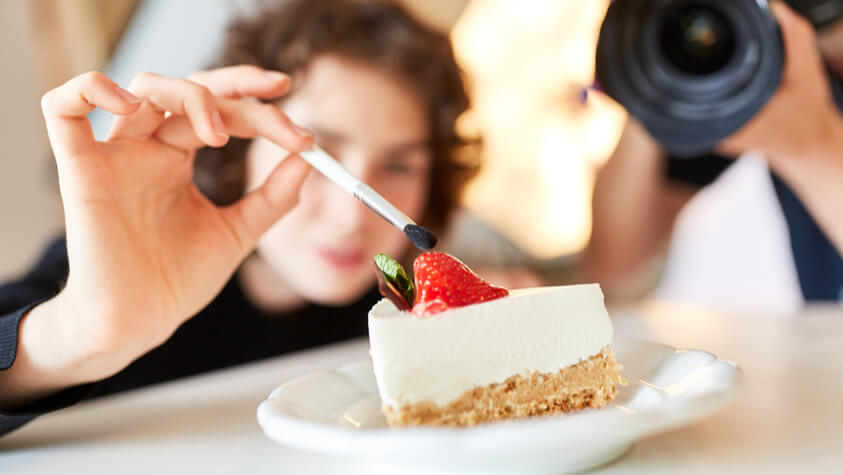By TACP Staff on July 13, 2021

Proper presentation of food can almost be as essential as its preparation. Professional food stylists are artists with a culinary flair. The food stylist must use color, shape, texture and food compatibility to create an artistic plate; one which is as appetizing as it is beautiful. Food stylists work in various industries; for photographers, magazines, restaurants and catering companies. If you are an artistic foodie—this job’s for you!
There are certain situations in which the way food looks is actually more important than how it tastes. I know! Some people may have a hard time believing this, but it’s true. Food styling is the art of arranging food so that it looks tasty and fresh. This is important in a number of situations, particularly when the food is being photographed. For instance, the pictures of food that you see in cookbooks, magazines, advertisements, and menus have been styled.
Although these pictures may have the power to make your mouth water, the food itself may not be edible. Professional food stylists use different techniques to present food in a way that makes it appear as delicious as possible. Here are a few common tricks that many food stylists will use:
A food stylist is essentially a creative professional that prepares food for its close-up. They will often work closely with chefs, editors, and photographers. However, in some cases, the food stylist might also be the food photographer as well.
Before arranging the food, though, a food stylist will typically choose other accessories for the shot first. This usually involves choosing things like plates, table cloths, and placemats. Accessories that compliment the food are usually chosen for this step. For example, Mexican food would usually be placed on colorful Mexican-themed plates.
Cooking or otherwise preparing the food is the next step. As mentioned above, some types of food are not cooked all the way through, just enough to make them look edible. Tools like blowtorches or even hair dryers can be used to brown and scorch the edges of the meat.
The food is then arranged on the plate so that it appears as attractive and scrumptious as possible. Also mentioned above, food stylists have a number of different sneaky little tricks to make this possible.
The majority of food stylists are very passionate about what they do and passionate about food in general. In general, food stylists should love to cook and be great at it. They should also have an eye for little details.
Individuals interested in a food styling career should be aware that there is no actual degree for food styling specifically. Instead, most aspiring food stylists start their careers with a culinary arts degree. They may also be able to take courses and attend seminars to learn the tricks and techniques of food styling.
In general, the amount of money a food stylist will get paid will vary, depending on several things. Food stylists in larger city will usually be more in demand, for instance, and can therefore command a higher fee. Since many food stylists work as freelancers and the Bureau of Labor Statistics does not collect data for this particular profession, however, calculating the average salary of a food stylist can be difficult. Individuals who work in special food services are the closest sort of professionals to food stylists. According to the Bureau of Labor Statistics, these professionals made an average salary of $52,240 in 2018.
Those pursuing a food styling career typically start out as traditional cooks or chefs. They work in kitchens of all types of different fine dining establishments, from hotel kitchens to classy restaurants.The beginning of most food styling careers starts by working with experienced and established food stylists first. Once a beginning food stylist gains enough experience – as well as pieces for his portfolio – he can then start to take on clients of his own.Many food stylists work as freelancers, but some companies also hire in-house food stylists. Restaurants, for example, may hire food stylists to arrange their food for menu pictures. Magazine publishers might also hire food stylists, as will cook book publishers. Advertising agencies who work with food companies might also hire a few food stylists of their own.
Consider these related careers in Culinary Arts.

The Art Career Project is a trusted resource for emerging and professional artists.